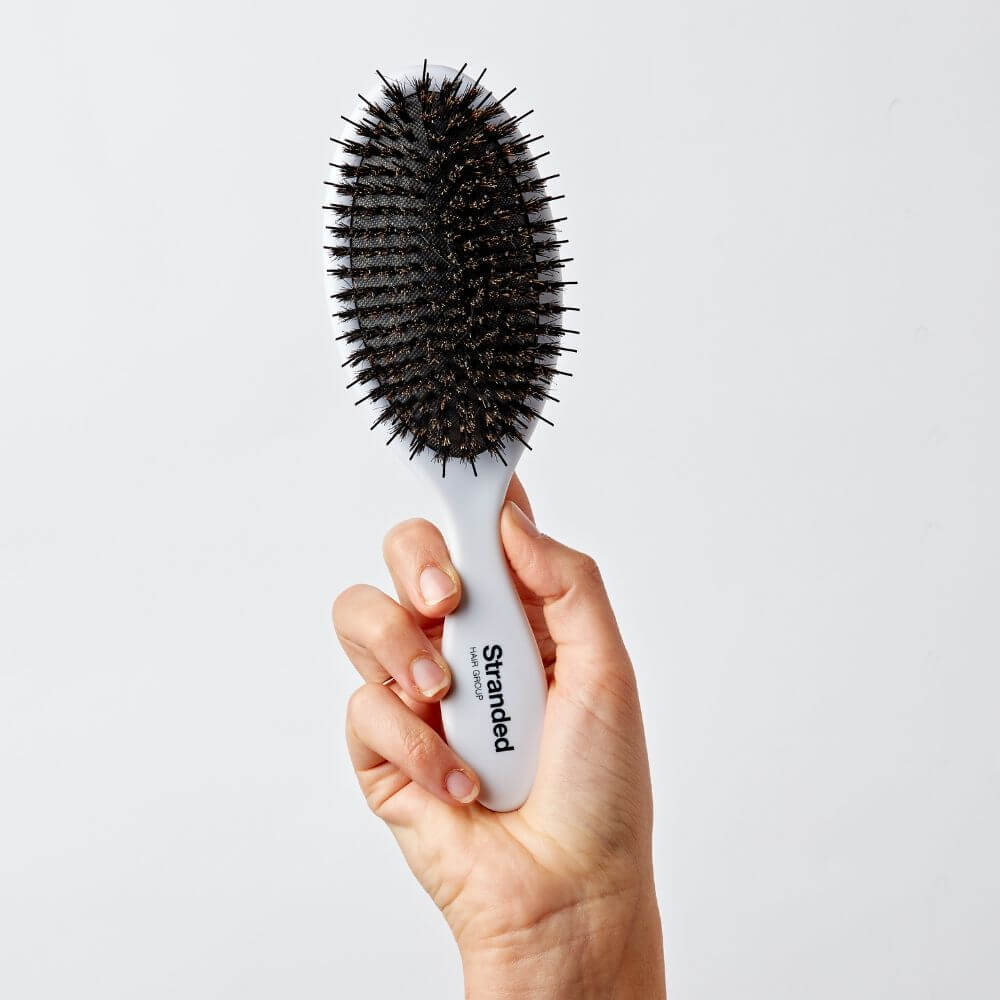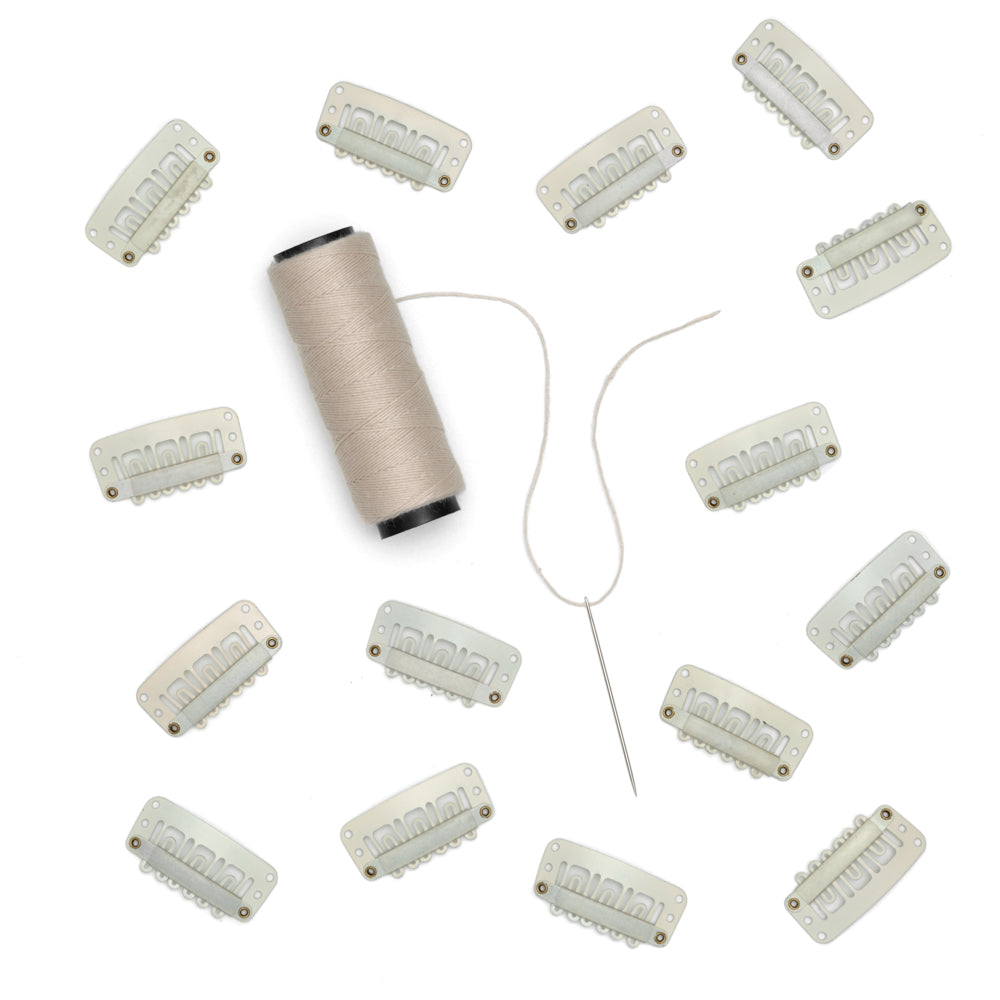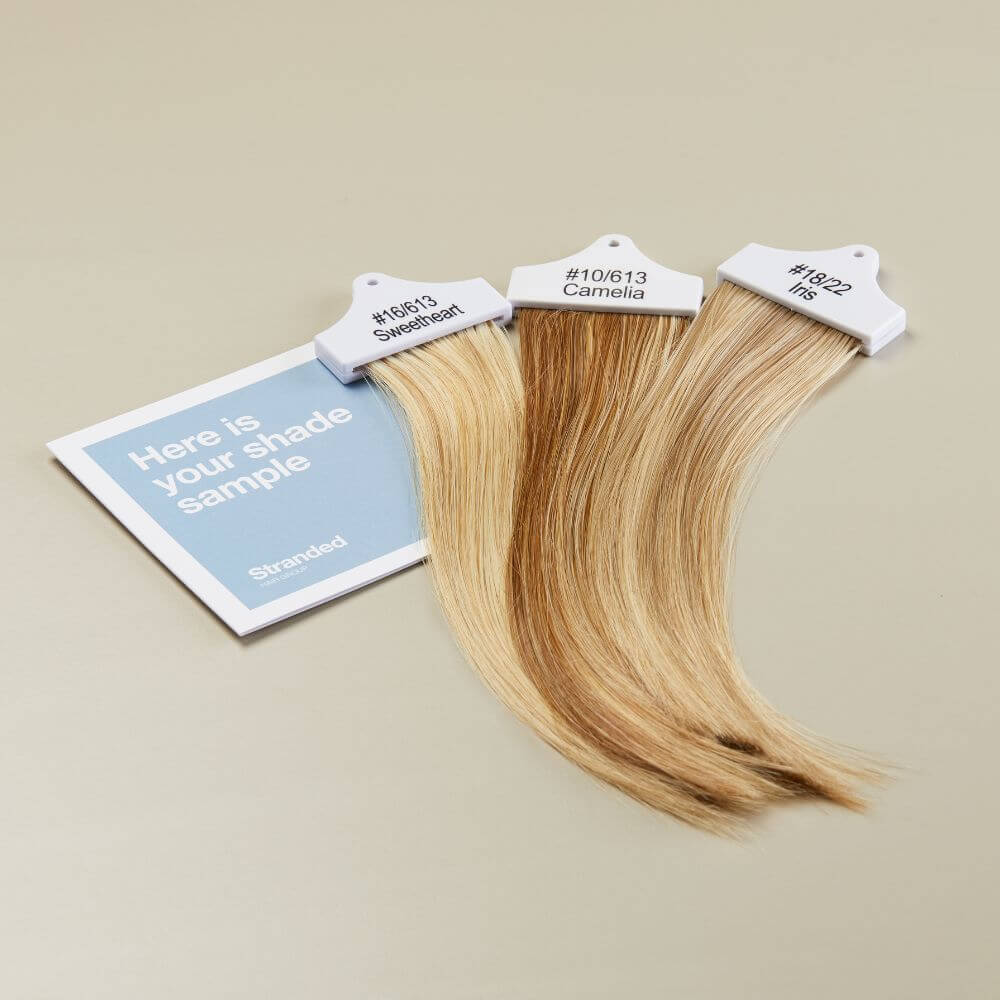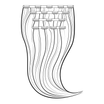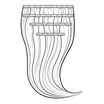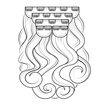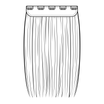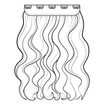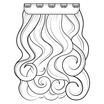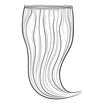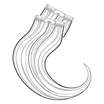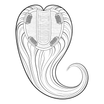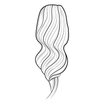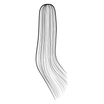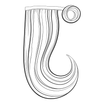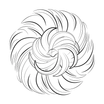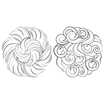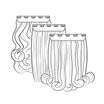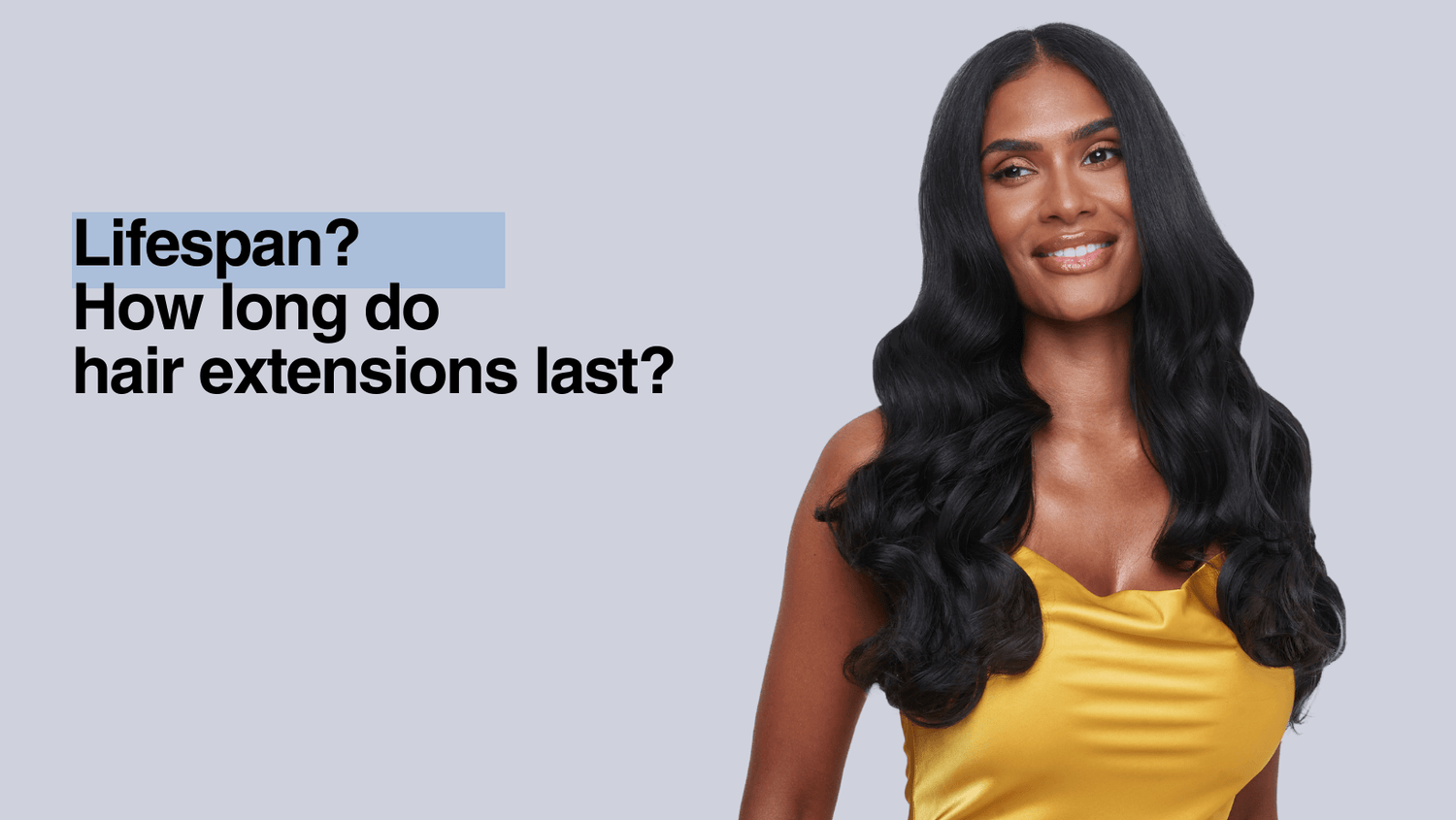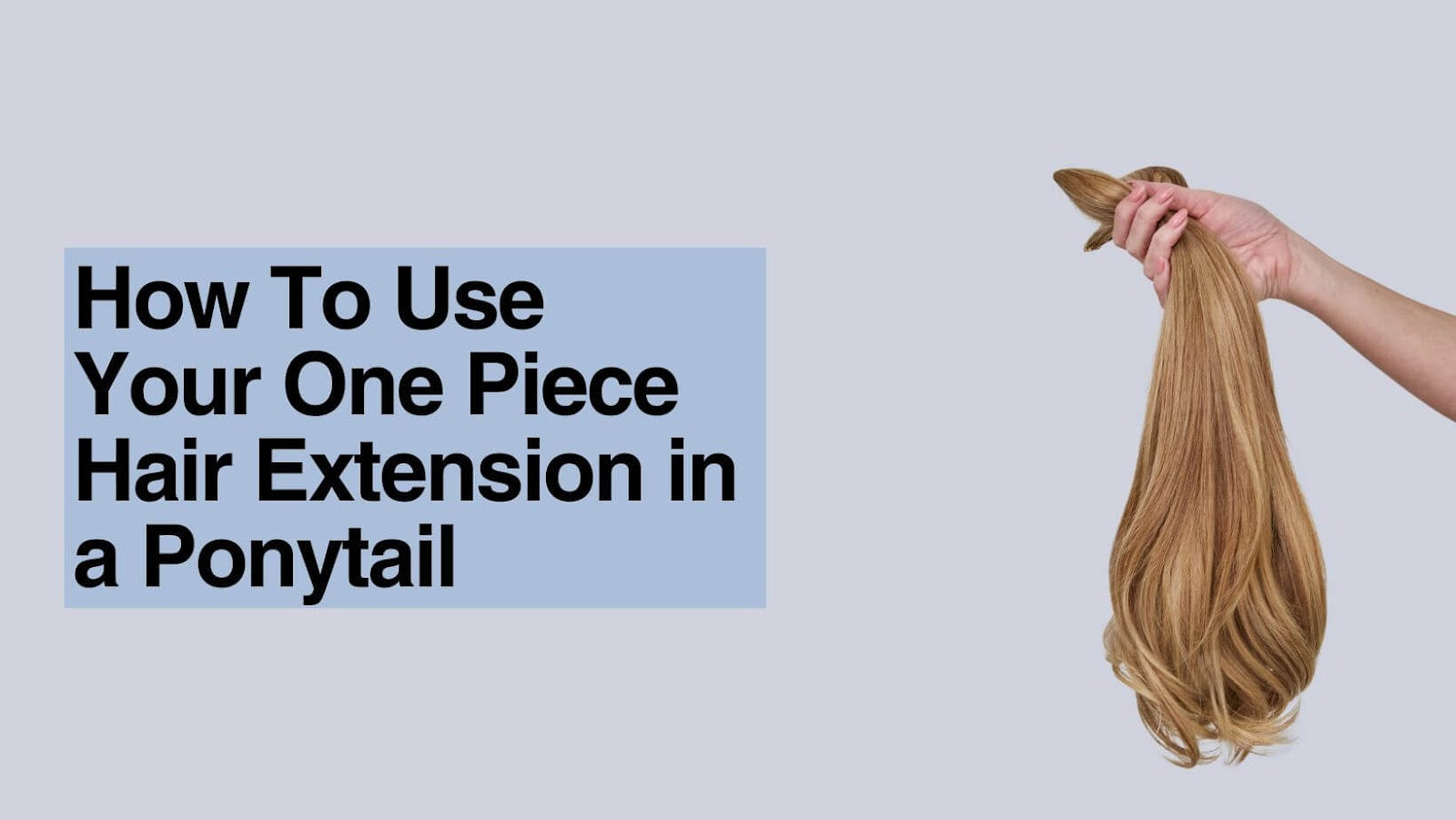Jumping into the world of hair extensions can feel like a complicated process, because there is just so much to learn. But one thing we know you’re going to prioritise is how long your extensions are going to last.
Here at Stranded, we’re not just a clip-in extension brand - we are a team of industry experts with a vast knowledge of all hair extensions! And because of that, we know that clip-in extensions may not be your first or ultimate choice when it comes to investing in your confidence.
In this article, you will learn about the different types of extensions, how long they should last and how to secure their longevity. By the end, you should be one step closer or even at the finish line to investing in your hair extension journey.
What are the different types of extensions?
There are two different categories of hair extensions on the market - temporary and semi-permanent extensions. Each category, and each different type of extension, has its own pros and cons, price points and lifespan.
Temporary extensions
One type of temporary hair extension (and our favourite) is clip-in extensions. Just as the name says, clip-in extensions are installed temporarily, by attaching to the natural hair with silicone-lined clips. Clip-in extensions come in a range of styles, such as one-pieces, multi-piece extensions, ponytails and buns. These types of extensions are available in both synthetic and human hair.
Another type of temporary hair extension (relatively new to the market) is halo extensions. Halo extensions are one-piece extensions that attach to the natural hair, temporarily, using a soft wire and sometimes silicone-lined clips. Halos are also available in both synthetic and human hair.
Semi-permanent extensions
Tape extensions are one of the most popular semi-permanent extensions available in UK salons. Tape extensions are made of human hair and are thin strips of extension, sandwiched with a strip of the client’s natural hair. This extension method is known to be the least damaging, virtually invisible and most versatile for different hair needs.
Micro bead extensions are also a very popular type of semi-permanent hair extensions in UK salons. The micro bead extensions are made of human hair and are looped and pressed into small strands of the client’s natural hair. This extension method is known to be very versatile to different hair needs and can be virtually invisible.
Pre-bonded extensions are the big sister of micro bead extensions. This semi-permanent extension method also uses human hair and is bonded to small strands of the client’s natural hair using small bonds known as U-tips. This extension method is also very versatile and virtually invisible, but is becoming quite outdated.
Weft extensions are a classic when it comes to semi-permanent extension methods. This method can be customised completely to the client’s needs, but comes packaged as long strips of extensions. Wefts are typically sewn into braids in the client’s hair and are made of human hair.
How long do temporary extensions last?
Despite being classed as ‘temporary extensions’, these methods can have a very healthy lifespan when cared for correctly, both for synthetic and human hair extensions. See below for our recommendations:
Clip-in extensions
Synthetic clip-in extensions, when worn around once a week and cared for as instructed, should last you around 3 months or 15 wears. At this point, we would recommend replacing your extensions, however, some people can bring them back to life with a good wash and style tweak.
We recommend the 20” Synthetic Wand Wave One Piece Clip-in Extension, with loose cascading waves for the ultimate salon-worthy look - available in up to 34 multi-dimensional shades, to find your perfect colour match.
Human hair clip-in extensions, when worn around once a week and cared for as instructed, should last you around 6 months or 30 wears. Human hair needs to be washed more than synthetic and will damage as natural hair does, so we do recommend replacing it after this time.
We recommend the 20” Human Hair Luxury 4 Piece Clip-in Extension, made from 100% human hair for a natural-looking finish - available in up to 31 multi-dimensional shades, to find your perfect colour match.
Halo extensions
Synthetic halo extensions have a very similar lifespan to synthetic clip-ins. Whilst they have different care instructions, the piece should last you around 3 months or 15 wears before needing to be replaced. However, washing it could bring the piece back to life.
Human hair halo extensions again have a very similar lifespan to human hair clip-ins but will require different care instructions. The piece should last you around 6 months or 30 wears, however, will need to be replaced at this point, due to wear and tear of the natural hair.
How long do semi-permanent extensions last?
Even though these extension methods are classed as ‘semi-permanent’, this does necessarily mean that they are going to last close to forever. However, they can have a very healthy lifespan when cared for correctly.
As all semi-permanent extensions come in human hair, the lifespan is typically 6 to 12 months. However, multiple factors can impact and shorten it. The type of human hair used in the extension can also affect the lifespan: there are multiple categories of human hair, however, the longest-lasting human hair is 100% Remy.
The only difference between the various types of semi-permanent extension methods' lifespan is their refit times needed, between first purchasing and needing new hair. See the different refit times below:
Tape extensions
Tape extensions need to be refitted every 6 to 8 weeks, depending on how quickly your hair grows. Ideally, depending on how well you care for your tapes, the human hair should last multiple refits - you will only need to replace the adhesive tapes at this time.
Microbead extensions
Micro bead extensions tend to last longer than tape extensions, before needing a refit. Microbeads can last 6 to 12 weeks, depending on your rate of hair growth - meaning the only thing that will need to be replaced are the beads themselves.
Pre-bonded extensions
Pre-bonded extensions are very similar to micro bead extensions. These can last even longer than microbeads, with refits needed every 8 to 12 weeks, depending on your hair growth - with only the bonds (U-tips) needing to be replaced.
Weft extensions
Weft extensions can also last as long as pre-bonded extensions, with up to 8 to 12 weeks of wear before needing to be removed and resewn back into the natural hair. However, excess growth and the natural loosening of the braids can mean you may need a refit sooner than this timeframe.
What can shorten your extension’s lifespan?
There are so many factors that can shorten your extension’s lifespan, especially semi-permanent human hair. Here are some key things to look out for:
- Incorrect installation
- Not following aftercare advice (i.e. not using correct hair care products, not keeping up with regular maintenance, washing too often or not enough)
- Prolonging refit times
- Heat and styling damage
- Brushing wet hair
- Sleeping and exercising with hair down
- Swimming
How to make your extensions last longer
Whilst the list above might look really scary, let’s flip it and see how you can care for your extensions and prolong their lifespan:
- Get your extensions fitted by a professional
- Follow your aftercare advice to the T (i.e. correct hair care products, washing twice a week, keeping up with maintenance appointments)
- Get your extensions refitted when needed
- Reduce heat and styling damage (i.e. use a heat protectant, turn the temperature down, limit styling where possible, and leave the hair to air dry)
- Brush hair, gently, when dry
- Sleep and exercise with your hair in a loose braid
- Use a swim cap and wash your hair quickly after swimming (we recommend Malibu C Swimmer’s Wellness Collection)
What do you need to do now?
Learning how long your extensions will last may just be the tip of the iceberg in your extension education.
At Stranded, we know that hair extensions are not just a financial investment, but an investment in yourself and your confidence.
However, in this article, you have learned about the different types of extensions, how long each lasts and what could hinder or prolong the extension’s lifespan.
But what next?
Our brand is committed to ensuring our customers make educated decisions when it comes to hair extensions - that’s why we make articles like this one!
Check out our blog, here, for more relevant content such as ‘Guide on hair extensions for short hair’, ‘Hair extensions weights: explained’ and ‘Do hair extensions damage your hair?’.
Fancy giving clip-in extensions a try? Get expert colour matched for free, here, to find your perfect shade.

